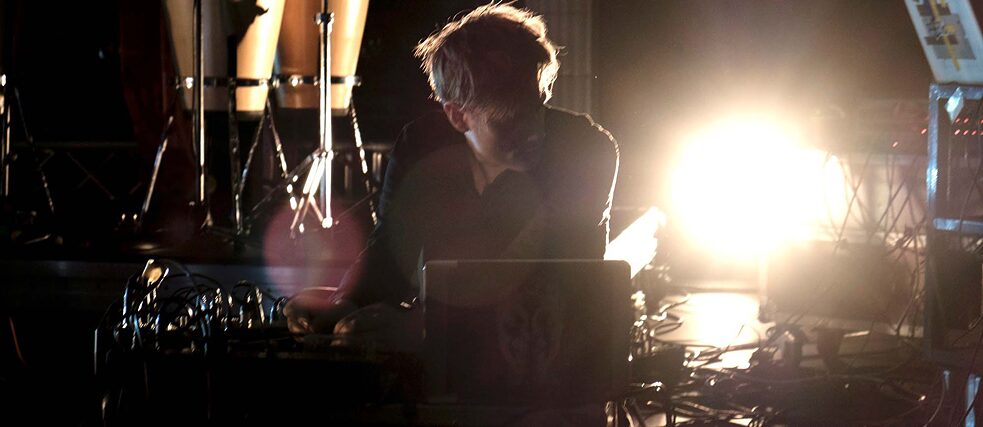Experimental Sound
Hearing Is the ‘Other’ Seeing

Jan St. Werner is a fearless sound innovator who is continuously redefining the space he works in. Whether experiments with the latest 3-D speaker technology or insights into psychoacoustic idiosyncrasies, his explorations ultimately find their way into new compositions and sound installations.
By Annette Klein
Most people know Jan St. Werner as one half of the German band Mouse on Mars which has elated experimental electronic music fans since 1993 with their ability to endlessly reinvent themselves and their sound world. Among other things, they have released 13 albums, started a successful label, and performed countless sold-out concerts, the most recent in Paris last December. But for Jan, Mouse on Mars is “just one of the planetary systems, albeit a large one, with which I am shooting through the cosmos.”
It turns out that Jan is another artist for whom “hearing is the ‘other’ seeing and is capable of conveying or creating an alternative reality,” as he puts it. In his universe, hearing can be anything from recording and processing acoustic events to linking into a more cognitive level of perception that works differently for each individual. This is where he sees a possibility for encouraging tolerance in our society through his practice. As he told me “when you perceive through others, your own dogmas often fall apart spontaneously.”
Although clearly drawn to the theoretical in investigating sound, hearing, and space, he sees himself decidedly as an artist. He likes that his work can remain idiosyncratic and can leave the interpretation up to his audience. His central means for expression is his laptop which serves simultaneously “as a compositional tool, a sound maker or instrument, an archive, a sketch board, and a communication device.” Research is nevertheless a large part of his practice, as is teaching, in the sense that much of his work is part of his search for answers. Jan never seems to stop exploring, innovating, and seeking out collaborations with both artists and researchers as his varied projects show.
My impression is that he not only explores sound through space, but also discovers new kinds of spatial experiences through playing with different aspects of sound, rhythm and speaker technologies. The definition of space for him goes beyond the traditional three-dimensional and includes a dimension of time. His explorations take him into both the physical and psychological realm, often a mixture of both, with a good dose of psychoacoustics.
A look through Jan’s websites Fiepblatter and Fiepblatter Catalogue gives an overview of his extensive work, both solo and collaborative, and shows how comfortable he is in a wide variety of formats including sound installations, symphonic concerts and academic conferences. Each of his six albums reflect explorations into distinct aspects of sound and space. The websites not only allow you to listen to the complete albums but have helpful descriptive texts.
Ever the optimist, Jan draws inspiration from the current situation and is not paralyzed by it. For him, it is an opportunity to explore yet another space. The annoying latency of our new online meeting spaces fascinates him and he is excited about interacting with collaborators there. “This [new situation] broadens our sensory space and is a learning process that we should indulge in since we wouldn’t have thought of it otherwise. This is why I find this crisis fascinating: it teaches us [to open up] and poses new challenges.” I think we can safely say that you can look forward to a new spatialized sound experiment sometime later this year.